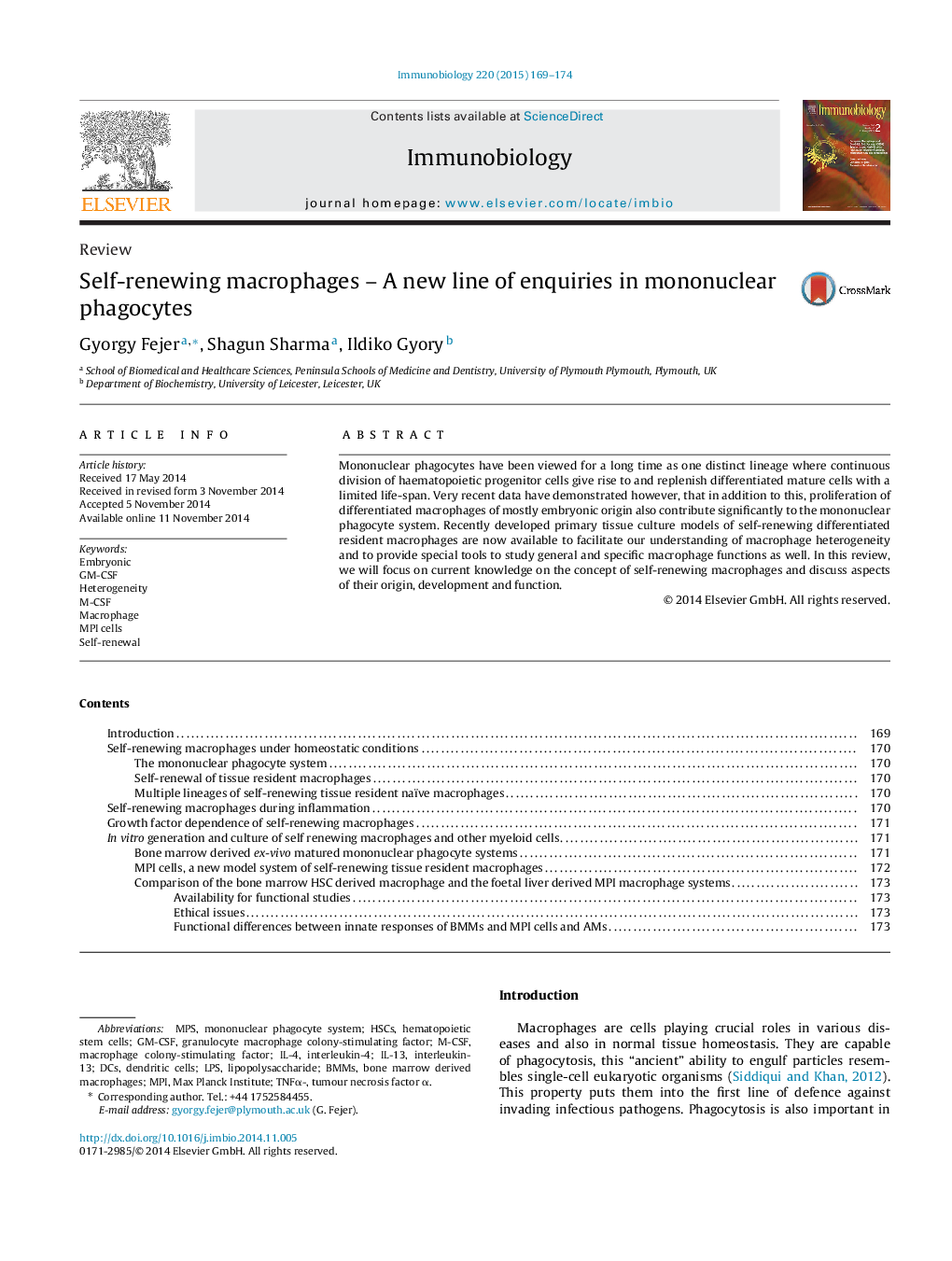| Article ID | Journal | Published Year | Pages | File Type |
|---|---|---|---|---|
| 10940971 | Immunobiology | 2015 | 6 Pages |
Abstract
Mononuclear phagocytes have been viewed for a long time as one distinct lineage where continuous division of haematopoietic progenitor cells give rise to and replenish differentiated mature cells with a limited life-span. Very recent data have demonstrated however, that in addition to this, proliferation of differentiated macrophages of mostly embryonic origin also contribute significantly to the mononuclear phagocyte system. Recently developed primary tissue culture models of self-renewing differentiated resident macrophages are now available to facilitate our understanding of macrophage heterogeneity and to provide special tools to study general and specific macrophage functions as well. In this review, we will focus on current knowledge on the concept of self-renewing macrophages and discuss aspects of their origin, development and function.
Keywords
HSCsM-CSFLPSIL-13IL-4GM-CSFDCsMPIBMMsinterleukin-4Interleukin-13tumour necrosis factor αEmbryonicSelf-renewalhematopoietic stem cellsDendritic cellsmononuclear phagocyte systemlipopolysaccharideMacrophagemacrophage colony-stimulating factorgranulocyte macrophage colony-stimulating factorbone marrow derived macrophagesHeterogeneityMPs
Related Topics
Life Sciences
Biochemistry, Genetics and Molecular Biology
Cell Biology
Authors
Gyorgy Fejer, Shagun Sharma, Ildiko Gyory,
